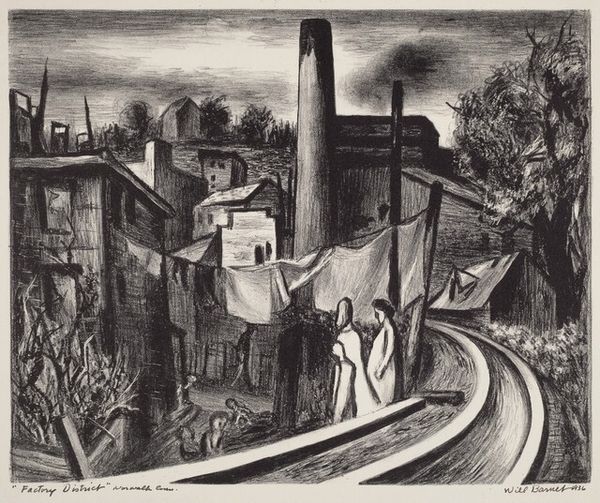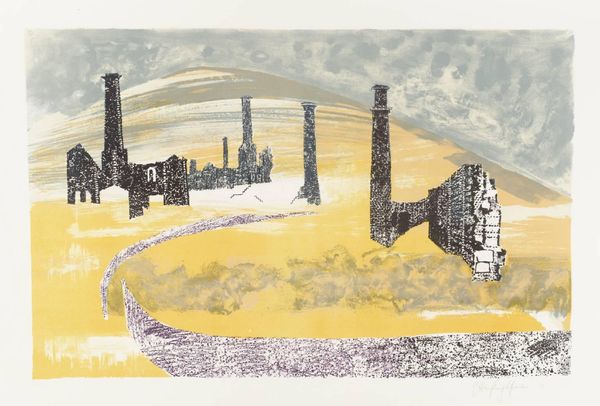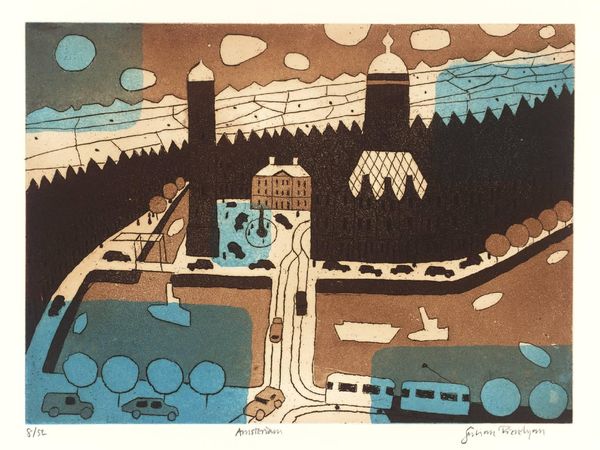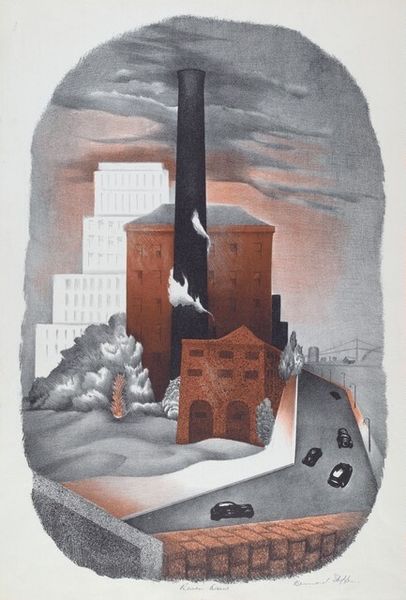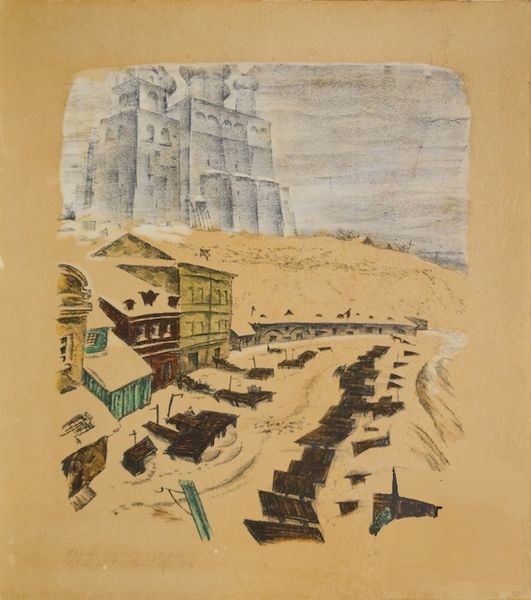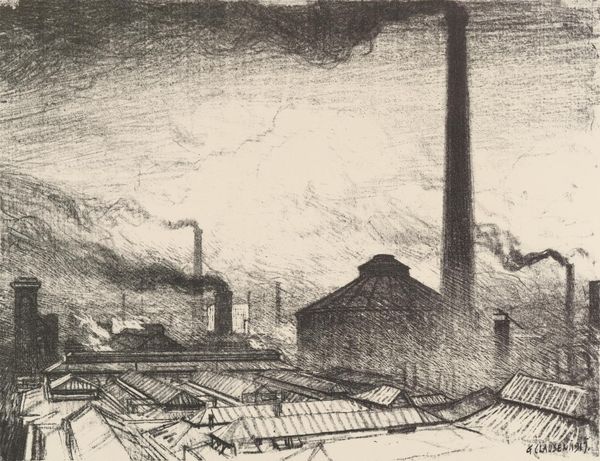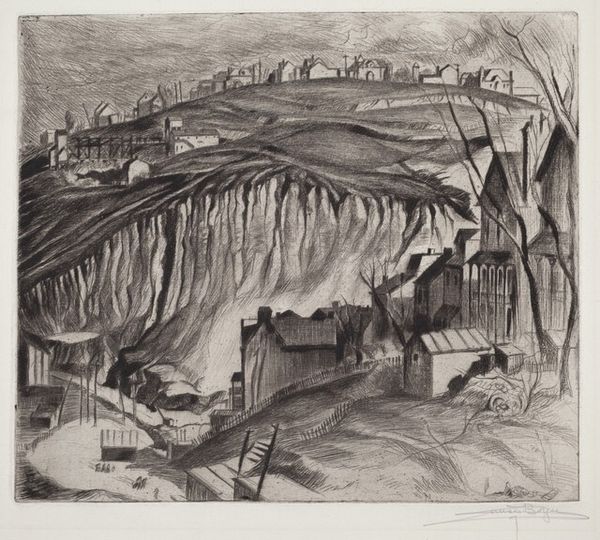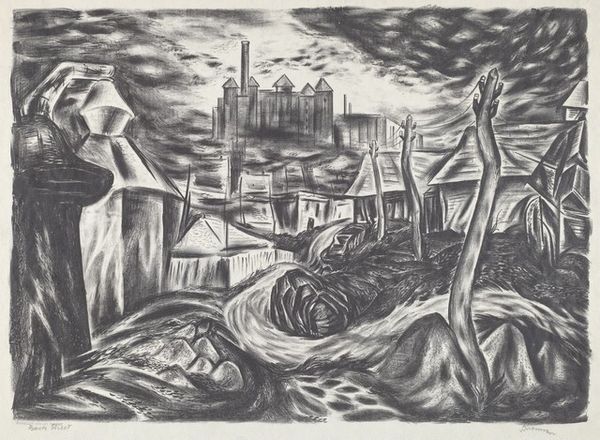
Dimensions: support: 310 x 540 mm
Copyright: © The estate of Julian Trevelyan | CC-BY-NC-ND 4.0 DEED, Photo: Tate
Editor: So, this mixed media collage is called "Rubbish May be Shot Here," by Julian Trevelyan. It’s…intense. The industrial landscape looms over what looks like discarded images of people. How do you interpret this work? Curator: It’s a powerful statement, isn’t it? Trevelyan seems to be asking us to consider what society deems disposable. The juxtaposition of industrial waste and fragmented human images highlights the dehumanizing effect of progress, doesn't it? Editor: It does. Are you saying he’s suggesting that industrialization treats people as disposable too? Curator: Precisely. And consider the title: is it a literal instruction, or a sardonic commentary on the value – or lack thereof – society places on certain individuals? Who gets shot down? Editor: Wow, I hadn’t thought of it that way. It makes you think about who is impacted most by environmental degradation. Curator: Exactly. It’s a call to action, to recognize and resist such devaluation. Editor: I learned a lot. It's more than just rubbish, it’s a mirror reflecting societal inequalities. Curator: Indeed, a potent reminder that art can be a powerful tool for social commentary.
Comments
tate 3 months ago
⋮
http://www.tate.org.uk/art/artworks/trevelyan-rubbish-may-be-shot-here-t12162
Join the conversation
Join millions of artists and users on Artera today and experience the ultimate creative platform.
tate 3 months ago
⋮
Rubbish May be Shot Here is a collage that marks a pivotal moment in Julian Trevelyan’s artistic development. It was made in 1937, the year King George V died and was succeeded by Edward VIII who, in order to marry a divorcee, was forced to abdicate in favour of his brother, crowned King George VI in his stead on 12 May. Most of the cut-out heads at the base of this image are taken from newspaper photographs of the coronation, or represent successive generations of the royal family: George VI’s widowed mother Queen Mary; his wife, Elizabeth (later the Queen Mother); and his two daughters Elizabeth (the present Queen) and her younger sister, Margaret. The smiling child, however, is taken directly from an advertisement for Shredded Wheat, captioned ‘the food for general fitness’. Above them tall factory chimneys and cotton mills reach into a smoky, cloud-studded sky, the solidity of the architecture contrasting forcefully with the chaos on the ground where royalty is mixed indiscriminately with printed images of pots and pans, royal plate, household furniture and vegetables. Darting through them are primitively-drawn fish in bright pastel colours.
